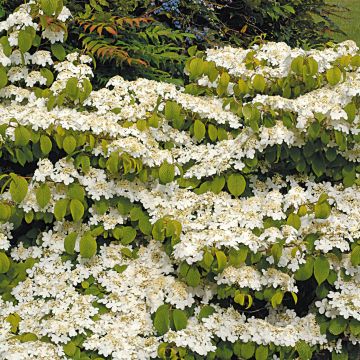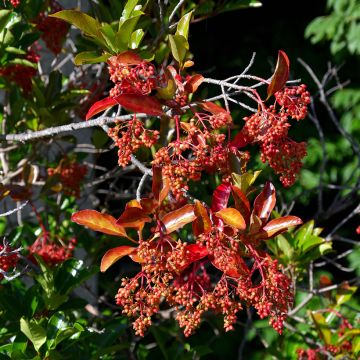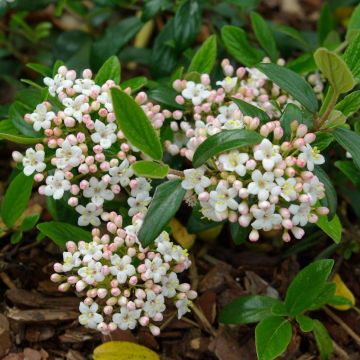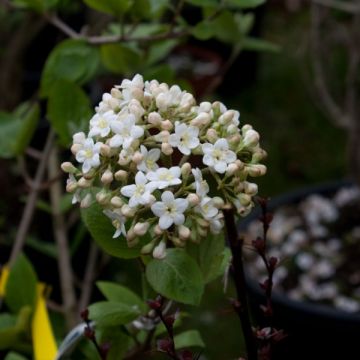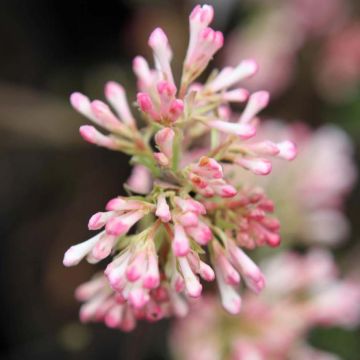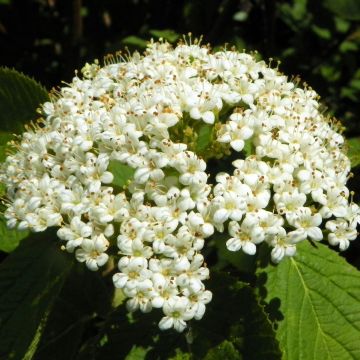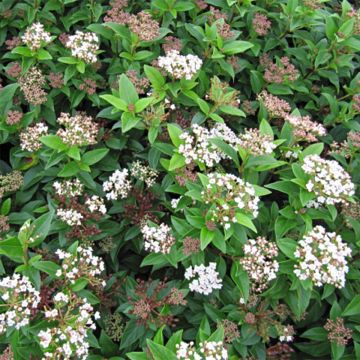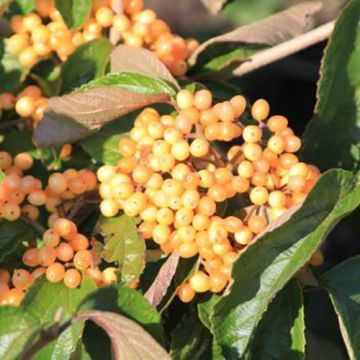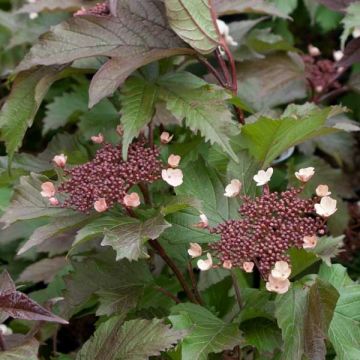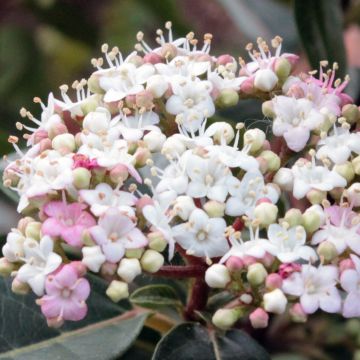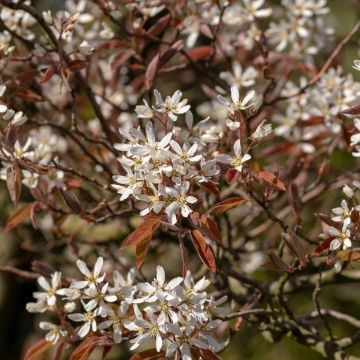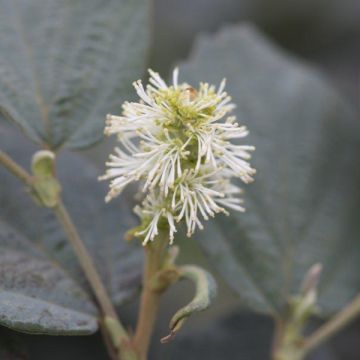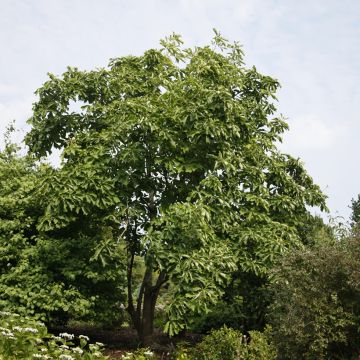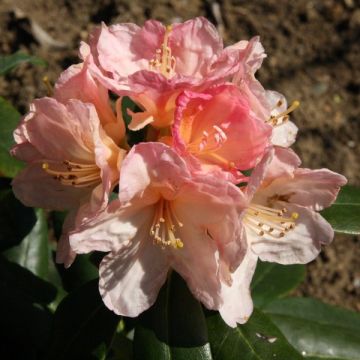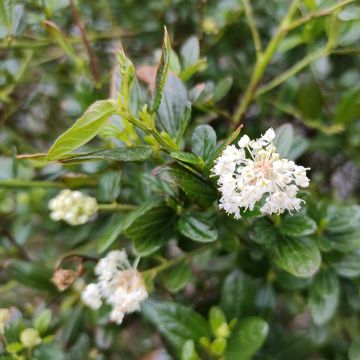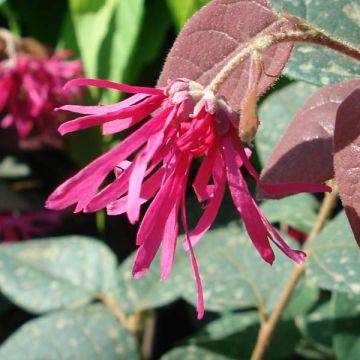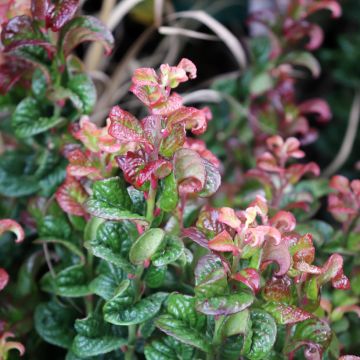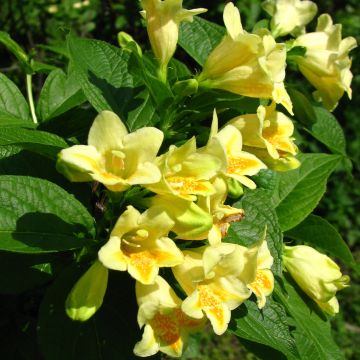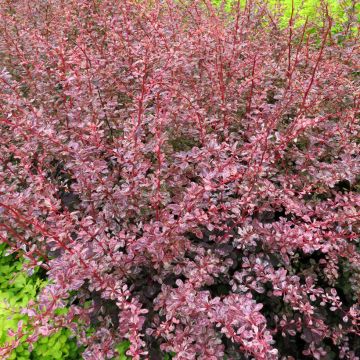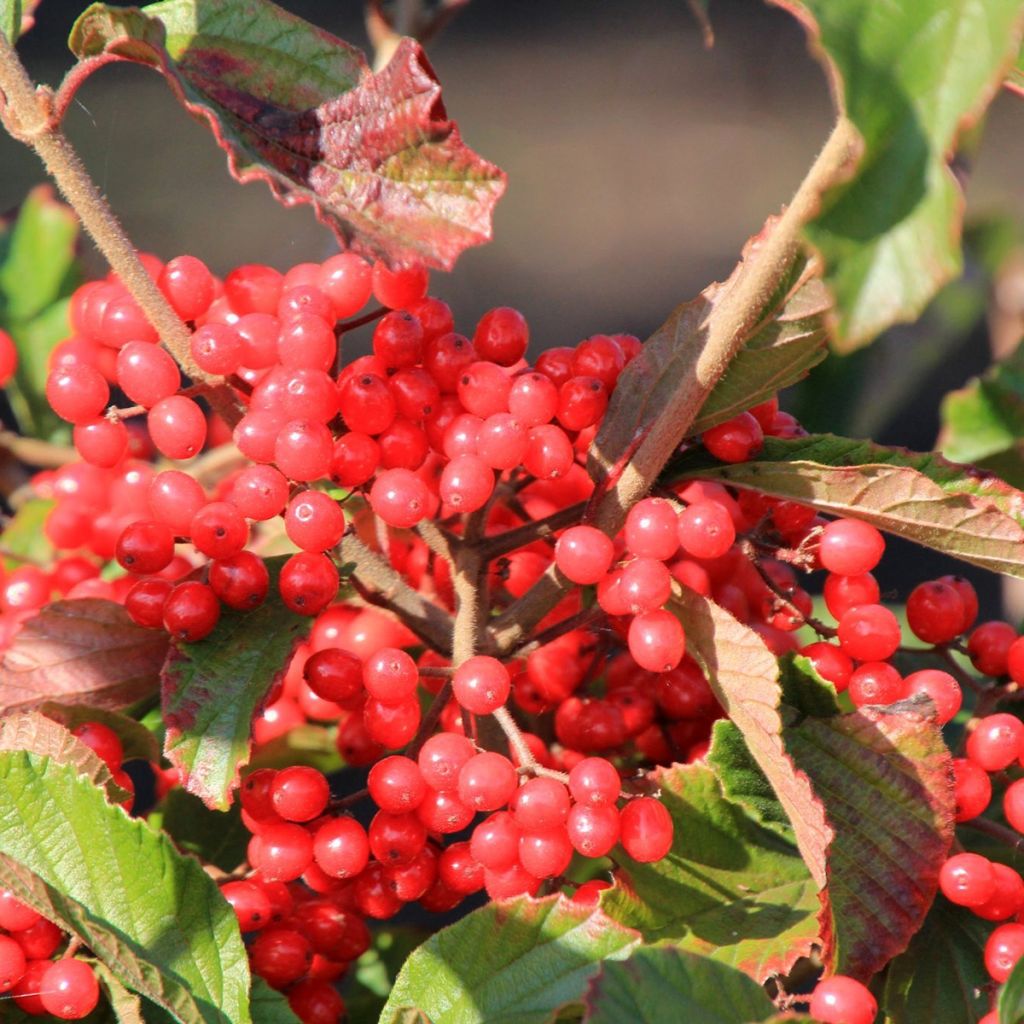

Viburnum dilatatum Sealing Wax
Viburnum dilatatum Sealing Wax
Viburnum dilatatum Sealing Wax
Linden Arrowwood, Linden Viburnum
This item cannot be shipped to the selected country
Delivery charge from €6.90
More information
Delivery charge from €6.90
More information
Schedule delivery date,
and select date in basket
This plant carries a 24 months recovery warranty
More information
We guarantee the quality of our plants for a full growing cycle, and will replace at our expense any plant that fails to recover under normal climatic and planting conditions.
From €7.90 for pickup delivery and €6.90 for home delivery
Express home delivery from €8.90.
Does this plant fit my garden?
Set up your Plantfit profile →
Description
Viburnum dilatatum 'Sealing Wax' is a compact, fruitful and colourful form of the linden leaf viburnum, also known as the large panicle viburnum. This deciduous bush offers a generous spring flowering with large fluffy white umbels, followed by an abundant and decorative red fruiting that is sought after by birds. Its foliage, which turns dark red in autumn, and its persistent fruits bring colour and life to the garden when the flowering season is gone. Hardy, undemanding, rural and colourful, this bush has its rightful place in an informal or flowering hedge.
Viburnum dilatatum 'Sealing Wax' belongs to the Viburnaceae family, just like its cousins the snowball viburnum and the guelder rose. Its ancestor, Viburnum dilatatum, is a beautiful bush native to China, Japan and Korea. In nature, it is found in clear forests and copse in the plains, always in sunny locations on slightly moist soils. Little known, this plant deserves its place in our gardens. It has produced some very interesting cultivars for our gardens.
'Sealing Wax' is a fairly fast-growing bush that reaches an average of 1.75m (6ft) in all directions at maturity. Its habit is bushy. Several stems emerge from its stump, giving rise to a highly branched vegetation. The bark is pubescent and brown with orange reflections when young, becoming smooth and grey over time. The deciduous leaves resemble those of the linden tree. Arranged alternately, they are simple, of variable size and shape, with toothed edges, but always very textured, traversed by prominent veins. In summer, their colour is dark green. In autumn, they turn from bronze to wine-red before falling quite late. The abundant and decorative flowering takes place in May-June. It takes the form of flat inflorescences over 10cm (4in) in diameter, composed of a multitude of small cream-white flowers with prominent stamens. After pollination by insects, the fruits form. These are small translucent and shiny berries that turn bright red when ripe in September.
Completely hardy, Viburnum dilatatum 'Sealing Wax' is content with good, deep and moist garden soil, even limestone or clay. This bush can be placed in isolation to attract attention in small gardens, but it excels in a rural hedge or shrub bed. It can be planted with numerous shrubs chosen for their autumn foliage (spindle tree, burning bush, smoke tree, oakleaf hydrangea, ninebark), their spring flowering (mock orange, flowering crab apples, lilacs, Canadian serviceberry), or for their pretty fruiting (chokeberries, beautyberries, cotoneasters, elderberries, snowberries, Chinese quince).
Viburnum dilatatum Sealing Wax in pictures
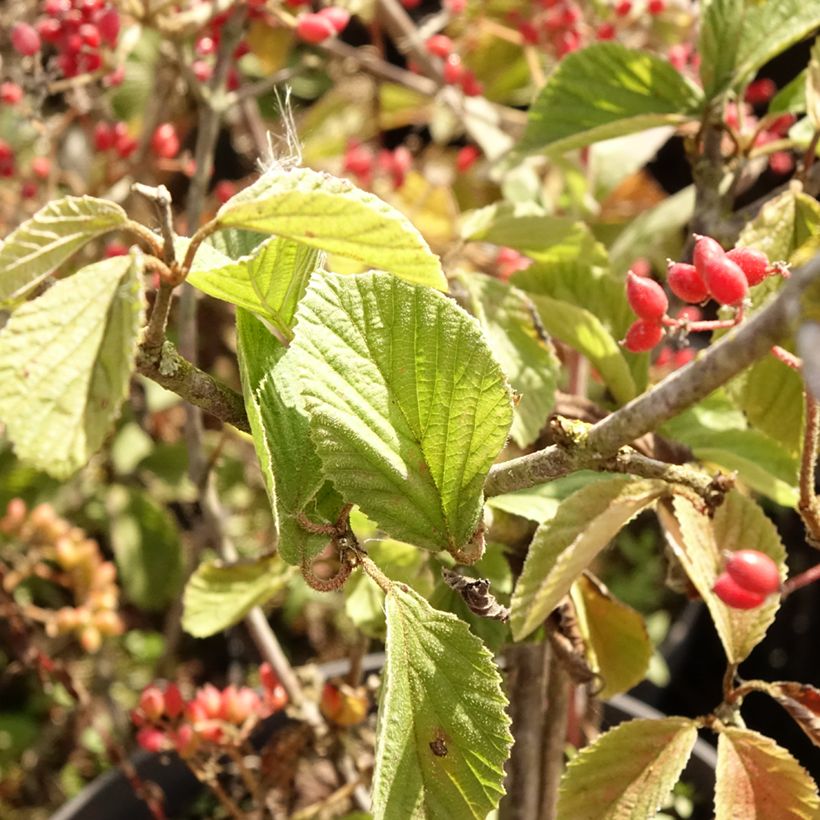

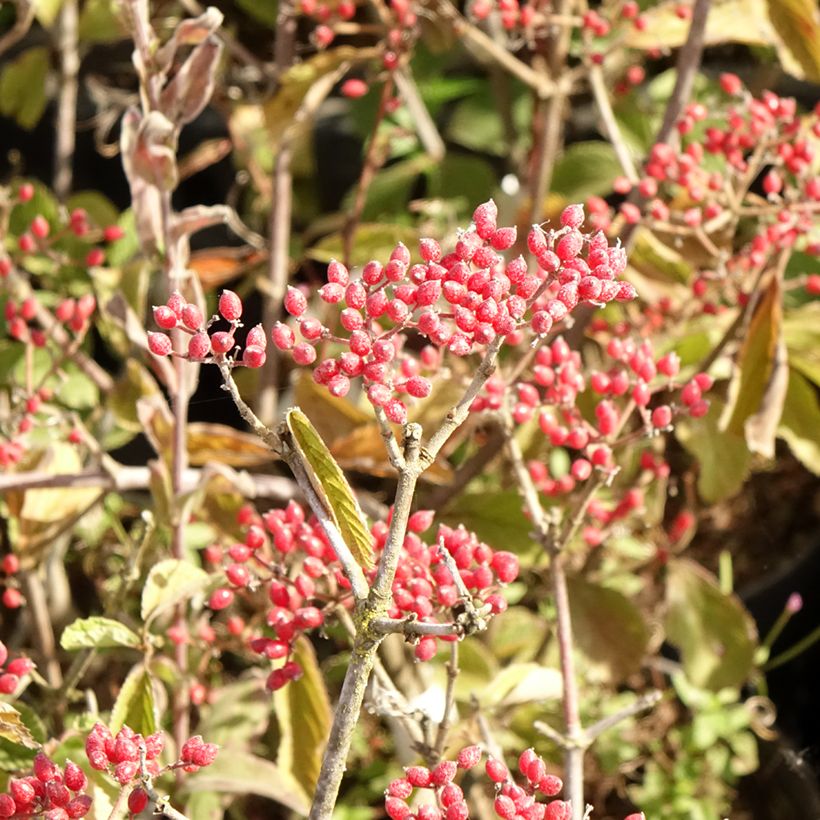

Plant habit
Flowering
Foliage
Botanical data
Viburnum
dilatatum
Sealing Wax
Caprifoliaceae
Linden Arrowwood, Linden Viburnum
Cultivar or hybrid
Other Viburnum
Planting and care
Viburnum dilatatum 'Sealing Wax' thrives in sunny or semi-shaded positions. It adapts to any good deep and loose garden soil, not too dry in summer, even clayey or slightly chalky. Add ericaceous soil to the planting substrate in very chalky soil. Abundant watering after planting and during the few weeks following its establishment will ensure good recovery. Pruning can be done after flowering to maintain a compact habit.
Planting period
Intended location
Care
-
, onOrder confirmed
Reply from on Promesse de fleurs
Spring-flowering shrubs
Haven't found what you were looking for?
Hardiness is the lowest winter temperature a plant can endure without suffering serious damage or even dying. However, hardiness is affected by location (a sheltered area, such as a patio), protection (winter cover) and soil type (hardiness is improved by well-drained soil).

Photo Sharing Terms & Conditions
In order to encourage gardeners to interact and share their experiences, Promesse de fleurs offers various media enabling content to be uploaded onto its Site - in particular via the ‘Photo sharing’ module.
The User agrees to refrain from:
- Posting any content that is illegal, prejudicial, insulting, racist, inciteful to hatred, revisionist, contrary to public decency, that infringes on privacy or on the privacy rights of third parties, in particular the publicity rights of persons and goods, intellectual property rights, or the right to privacy.
- Submitting content on behalf of a third party;
- Impersonate the identity of a third party and/or publish any personal information about a third party;
In general, the User undertakes to refrain from any unethical behaviour.
All Content (in particular text, comments, files, images, photos, videos, creative works, etc.), which may be subject to property or intellectual property rights, image or other private rights, shall remain the property of the User, subject to the limited rights granted by the terms of the licence granted by Promesse de fleurs as stated below. Users are at liberty to publish or not to publish such Content on the Site, notably via the ‘Photo Sharing’ facility, and accept that this Content shall be made public and freely accessible, notably on the Internet.
Users further acknowledge, undertake to have ,and guarantee that they hold all necessary rights and permissions to publish such material on the Site, in particular with regard to the legislation in force pertaining to any privacy, property, intellectual property, image, or contractual rights, or rights of any other nature. By publishing such Content on the Site, Users acknowledge accepting full liability as publishers of the Content within the meaning of the law, and grant Promesse de fleurs, free of charge, an inclusive, worldwide licence for the said Content for the entire duration of its publication, including all reproduction, representation, up/downloading, displaying, performing, transmission, and storage rights.
Users also grant permission for their name to be linked to the Content and accept that this link may not always be made available.
By engaging in posting material, Users consent to their Content becoming automatically accessible on the Internet, in particular on other sites and/or blogs and/or web pages of the Promesse de fleurs site, including in particular social pages and the Promesse de fleurs catalogue.
Users may secure the removal of entrusted content free of charge by issuing a simple request via our contact form.

































